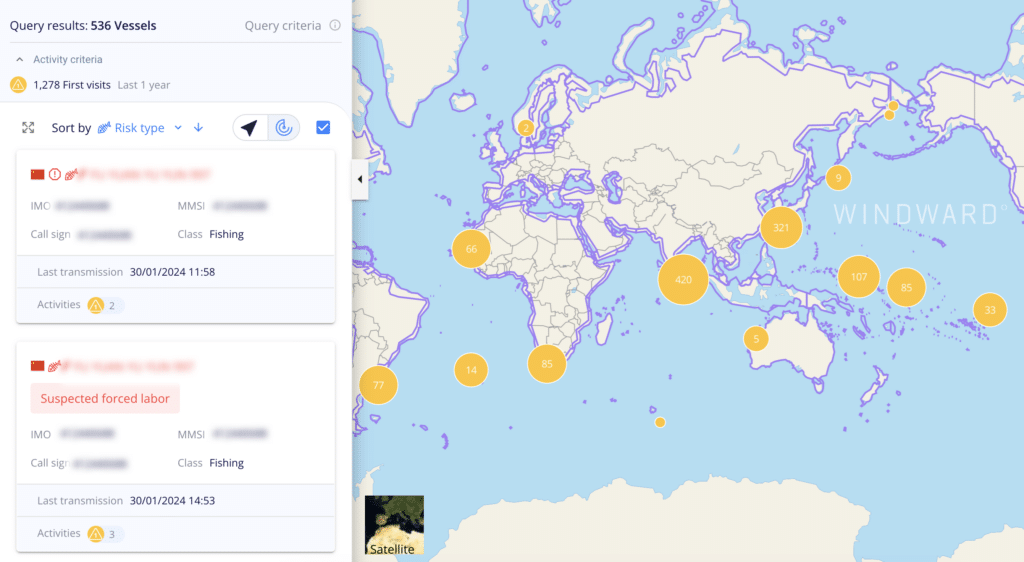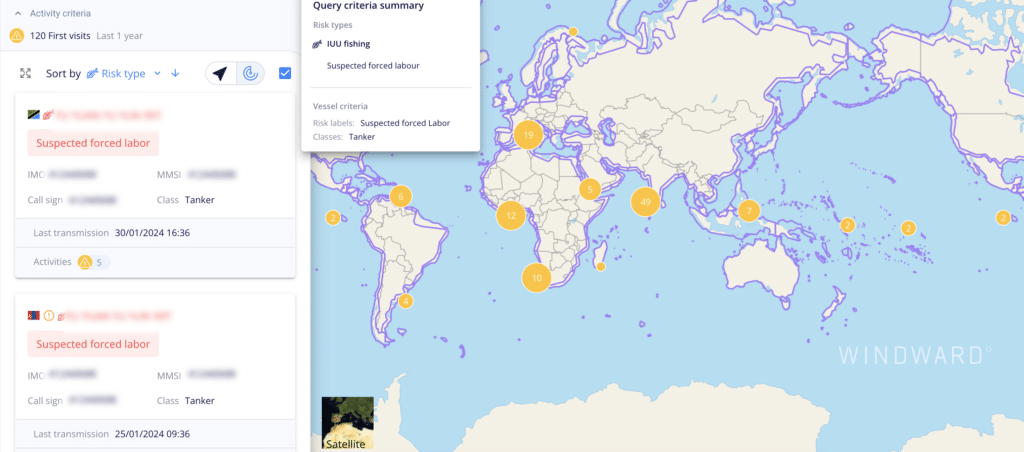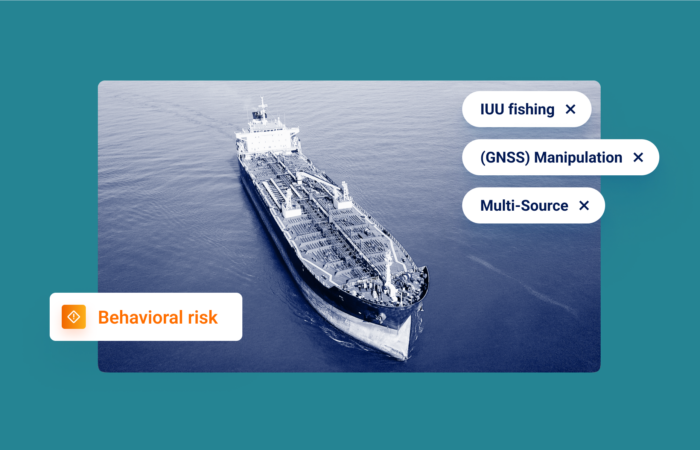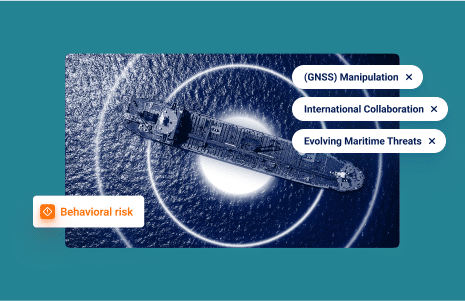What’s inside?
Illicit actors have been testing the patience and capabilities of coast guards and law enforcement agencies worldwide. One example was the Panama-flagged vessel smuggling 2.3 tons of cocaine from South America to Spain that turned into quite a high-stakes situation, according to The Guardian.
This incident is reminiscent of past maritime drug busts Windward has analyzed.
Meanwhile, the Phillipines’ fishing bureau accused Chinese fishing vessels of using cyanide to destroy Scarborough Shoal, an area flush with fish that has become a focal point in the great power competition.
Coast guards continue to face major challenges, while grappling with added concerns regarding the Houthi disruptions – which have reshaped certain deceptive shipping practices (DSPs) and affected illegal, unreported, and unregulated (IUU) fishing.
Coast Guard Capability 2024, which Windward is attending and our CEO is speaking at (see below), will be a good chance to discuss the collective challenges and the best way to solve them. Here are three topics Windward expects to be widely discussed at the event:
1. The Importance of Shareable Communication
No one agency can act as a lone wolf, especially considering the frequency and wide array of challenges. Missions often involve multiple agencies and organizations, oftentimes located in different countries.
As noted, the Panama-flagged vessel departed from South America and eventually made its way to Spain. The joint operation apparently included the Spanish Customs Surveillance Service, National Police, and Civil Guard, as well as the National Crime Agency from the UK and the U.S. Drug Enforcement Administration (DEA).
Simple, easy, and fast sharing of information between one agency and another can be the very thing on which the mission depends. A common operating picture (COP) that receives data from multiple sources and shares it with relevant stakeholders in real time is a must-have.
Information pertinent to coast guards is classified in many cases and more difficult to share, especially between organizations. Open-source architecture that enables seamless transfer of data is a key way to overcome this specific hurdle. The Philippines and U.S., for instance, have historically tried to collaborate closely and strengthen maritime domain awareness to combat (IUU) fishing.
2. The Explosion in IUU Fishing
The Houthi disruptions (and evolving Russia sanctions) have altered DSPs, as previously mentioned. They also seem to have emboldened certain bad actors, who may believe coast guards are suddenly too preoccupied to detect IUU fishing.
As we wrote earlier this month, more than 536 high-risk fishing vessels visited territorial waters, canals, and straits for the first time ever in 2023. Windward’s IUU fishing risk model showed that the vessels deviated from their usual behavior and encroached onto new areas. Many of these vessels went to fish in the Indian Ocean, which saw the highest number of fishing vessels entering it for the first time.

This year alone (and these numbers are from early February), there were 430 additional high-risk fishing vessels, mostly Chinese, crossing Malacca for the first time and entering the Indian Ocean – a 145.5% increase compared to the 165 vessels doing the same in 2023!
In an expected correlation, tankers marked as “high risk” for suspected forced labor violations entered the Indian Ocean for the first time on 49 occasions, compared to only nine last year – a 444% increase. In total, vessels flagged for suspected labor violations made 120 first-time visits to new areas last year.

Geopolitical turmoil has always been a driver of changes in illicit behavioral patterns and the current situation is no exception. As the world follows the Red Sea crisis and, to a lesser extent, the continued conflict between Ukraine and Russia, illegal fishing is expanding in scale and scope – with many vessels moving into new territories.
3. The Necessity of a Multi-Source Technology Approach
Coast guards know better than anyone that the oceans and seas are massive. Mitigation of the gap between coverage aspirations and the limitations of reality lies in achieving operational efficacy by knowing where and when to deploy sensors and technology, to expand coverage. Because you can’t see everything, make sure you position yourself to see the things that matter.
Navy and Coast Guard personnel emphasized that strategic and effective deployment of sensors is vital for increasing coverage where it matters most, when it matters most. Simply dropping the sensor into the ocean (or upwards to the clouds) and hoping for relevant, timely, and actionable information is a doomed mission.
The best approach is a multi-source one. Maritime AI™ is the foundation for any effective solution. It transforms a sea of raw data into actionable insights. It is buttressed by technologies such as satellite images, synthetic aperture radar (SAR), radio frequency (RF) detection, and more.
Let’s Talk at the Event
Did we capture the main points you are interested in?
Please come to our booth to discuss your challenges and potential solutions in person. Also, Ami Daniel, Windward Co-Founder & CEO, will be part of the panel, “From Awareness to Action: Leveraging Predictive Intelligence to Detect and Respond to Emerging Threats,” on February 21, at 2:30 p.m.
See you there!















